What fertilizers are best for carrots
Fertilizers for carrots are used throughout the entire cultivation, from planting to the period of root formation. The plant is not too demanding on the chemical composition of the soil. But the mechanical characteristics of the soil for cultivation are very significant. For carrots, a loose soil with good water permeability is required. Therefore, on heavy clay, loamy and peaty soils, it is recommended to add loosening agents - sand, sawdust, sod soil. If the land is not too depleted, carrots can be grown without fertilization. Of course, you will not get a fabulous harvest in this case. Therefore, those who want to achieve good yields will have to resort to organic and mineral fertilizers. As with any crop, the soil is prepared first.
How to prepare the soil
Organic fertilizerIt is recommended to apply it to the soil for growing carrots in the fall. The root crop loves old, rotted organic matter. If before that a culture grew on the garden bed, abundantly flavored with humus or compost, then add organic fertilizerThis is optional. Carrots will feel great on the "old yeast".
Peat manure and compost are applied at the rate of 6-8 kg per 1 sq. M. Separately, if necessary, deacidify the soil by adding chalk, dolomite flour or ash. It should be noted that carrots are less capricious to the acidity of the soil than other root crops (for example, beets). Liming is carried out if the pH drops below 5.5 units. On acidic soils, carrots lose their taste and become unsweetened.
Do not fertilize and lime the soil at the same time.
Mineral fertilizers for carrots can be applied before winter, but this is usually done 2-3 weeks before planting. At the same time, a garden bed is being prepared. Baking powder is added to heavy soils, to the rest only a mixture of nitrogen and phosphorus fertilizers. Potassium complexes are added later in the form of liquid root dressing. The garden bed is dug to a depth of 25-30 cm.
- Sand, sawdust, humus are added to the peat soil to loosen the soil. Mineral fertilizers per 1 sq.m .: superphosphate 1 tablespoon, potassium chloride 1 tablespoon, urea 1 teaspoon.
- For clay and podzolic soils, sand, humus, peat or sawdust are also added. Fertilizers are applied in the amount of 2 tablespoons of nitrophosphate and 1 tablespoon of superphosphate. The same nitrogen and phosphorus mixtures are applied to sandy soils.
- Sand and sawdust are added to chernozem soils, plus 2 tablespoons of superphosphate.
Before adding superphosphate is ground into powder.
- You can apply another scheme: 2-3 weeks before planting, vermicompost is introduced into the soil, and humates are introduced a couple of days before planting.
- For 1 sq.m. 65 - 85 g of mineral fertilizers (vegetable mixture) are introduced and dug up.
- If there is no need to use mineral mixtures, you can use wood ash - two handfuls per 1 sq. M. under the rake.
- The ash of trees enriches the soil with potassium and microelements, it can be applied at the rate of 12-15 kg per hundred square meters during digging.
It should be borne in mind that if sawdust added to the soil in spring, then they must be soaked for three to four days, watering with a solution of nitrogen fertilizer (5 tablespoons of ammonium sulfate or urea per bucket of water).
Fertilizers for carrots when planting
Instead of fertilizing the soil when preparing the beds, you can do it when planting seeds.
- Sowing carrots with paste. An ordinary liquid paste is cooked from flour. Cool, dilute mineral fertilizers in it. Mixed with seeds and introduced into the prepared grooves using a large syringe, you can use a confectionery.
- The seeds are soaked in a solution of boric acid with the addition of nitrophoes... For 1 liter of solution, a third of a teaspoon of boric acid and a half teaspoon of nitrogenous fertilizer are required.
- Another recipe: wood ash - 1 tablespoon - is stirred in 1 liter of water. The seeds are placed in a bag and soaked for about a day, then dried and sown under a film.
In the process of growing
During the growing season, make at least two dressings. For late varieties, three is better. What fertilizers should be used for carrots? The most demanding of carrots to the content of potassium in the soil, less - to nitrogen and phosphorus. When adding potassium salts, it is better to use complexes with a low chlorine content. Carrots respond well to magnesium and sodium.
Nitrogen fertilizers bring in with care. With an excess of this element, the weakening of the root system occurs, the tops become weak. The root crop branches, its taste deteriorates, storage indicators deteriorate.
The root crop is very sensitive to the concentration of the soil solution. Therefore, all root dressing is carried out in liquid form, spilling the aisles.
- For the first feeding of carrots, about 150 g of mineral fertilizers are consumed per square meter, including: potash - 60 g, nitrogen - 50 g, phosphorus - 40 g. In subsequent applications, use a half dose.
- Or per square meter: ammonium nitrate 20 g, superphosphate and potassium chloride 30 g each.
- The next top dressing is done two to three weeks after the first, maintaining the active growth of the plant. For 10 liters of water they take potassium sulfate - 1 tablespoon, and azofoski - 1 tablespoon.
- You can also feed according to this scheme. A month after germination, the aisles are spilled with a solution at the rate of 4-5 liters per square meter. Take 1 tablespoon for 10 liters of water nitroammophos or nitrophoska. Repeat after 2-3 weeks in the amount of 7 liters per square.
- When using complex fertilizers, preference is given to concentrates with a high content of sodium, sulfur and boron.
For late varieties, a third feeding is carried out without nitrogenous fertilizers during the period of active growth of the root crop.
It is good to carry out the introduction of mineral mixtures after rain or deep watering.
Minerals or organics?
Organic matter is brought in before winter, since it is not recommended to do this directly under the carrots. With an excess of this kind of fertilizer, the root crop is prone to decay and is poorly stored. If a significant amount of organic matter was used under the previous culture, then it is not possible to add it under the carrots at all - the culture will grow on aftereffect. Methods for applying organic fertilizer for carrots:
- Chicken droppings are bred according to the general scheme: first, they are insisted in a ratio of 1:10, before watering, they are diluted another 10 times.
- The slurry is diluted 1:10 before introduction, the aisles are spilled.
A complex approach
If fertilizers were applied to the soil during the preparation of the beds or during planting, then during the summer the culture is fertilized 2-3 more times, using complex compositions.
- For digging in the fall or spring, add 2-3 kg of humus and 10 g each of phosphorus and potash fertilizers... In spring, when sowing, 10 g of sodium nitrate is introduced. After the emergence of friendly shoots, 15-20 g of nitrogen fertilizers are added with embedding in the aisles (can be combined with thinning).
Or:
- A month after germination: for 10 liters of water of any liquid organic fertilizer, 2 tablespoons and 1 teaspoon of nitrophosphate.
- The next feeding is done 14-20 days after the first one. In a bucket of water, dissolve 1 tablespoon of organic fertilizer and 1 teaspoon of mineral fertilizer for root crops, for example "Agricola 4".
The culture can also be fertilized using foliar dressing.
To make the carrots sweet, 2-3 weeks before harvesting, the tops are sprayed with humates: 1 g per 10 liters of water. The nutrients are transferred from the leaves to the root crop.
The lack of magnesium in the soil is compensated by spraying with a 2% solution of magnesium sulfate.With weak tops, carrots are sprayed with a 2% urea solution 4 months before harvesting. You can also use a boric acid solution.
Carrots are an unpretentious culture. The plant makes the greatest demands on the content of potassium in the soil, especially during the period of root crop formation. Organic fertilizers they are introduced into the soil before winter when digging, and nitrogen and phosphorus fertilizing is carried out 2 times during the growing season.
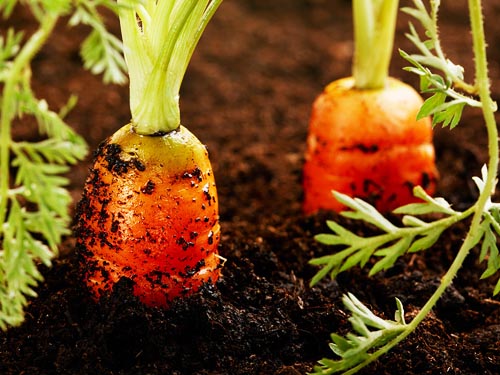
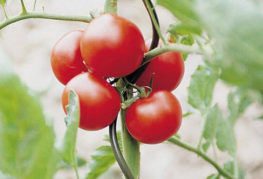

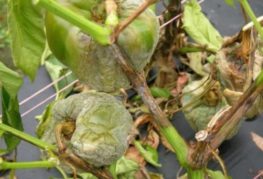
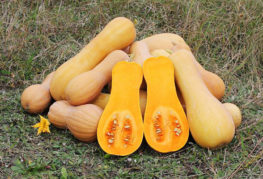
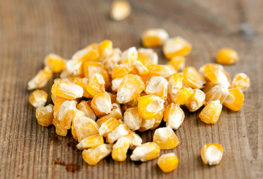
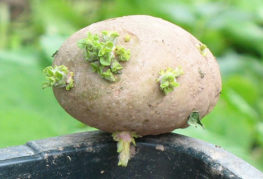
and will be published shortly.